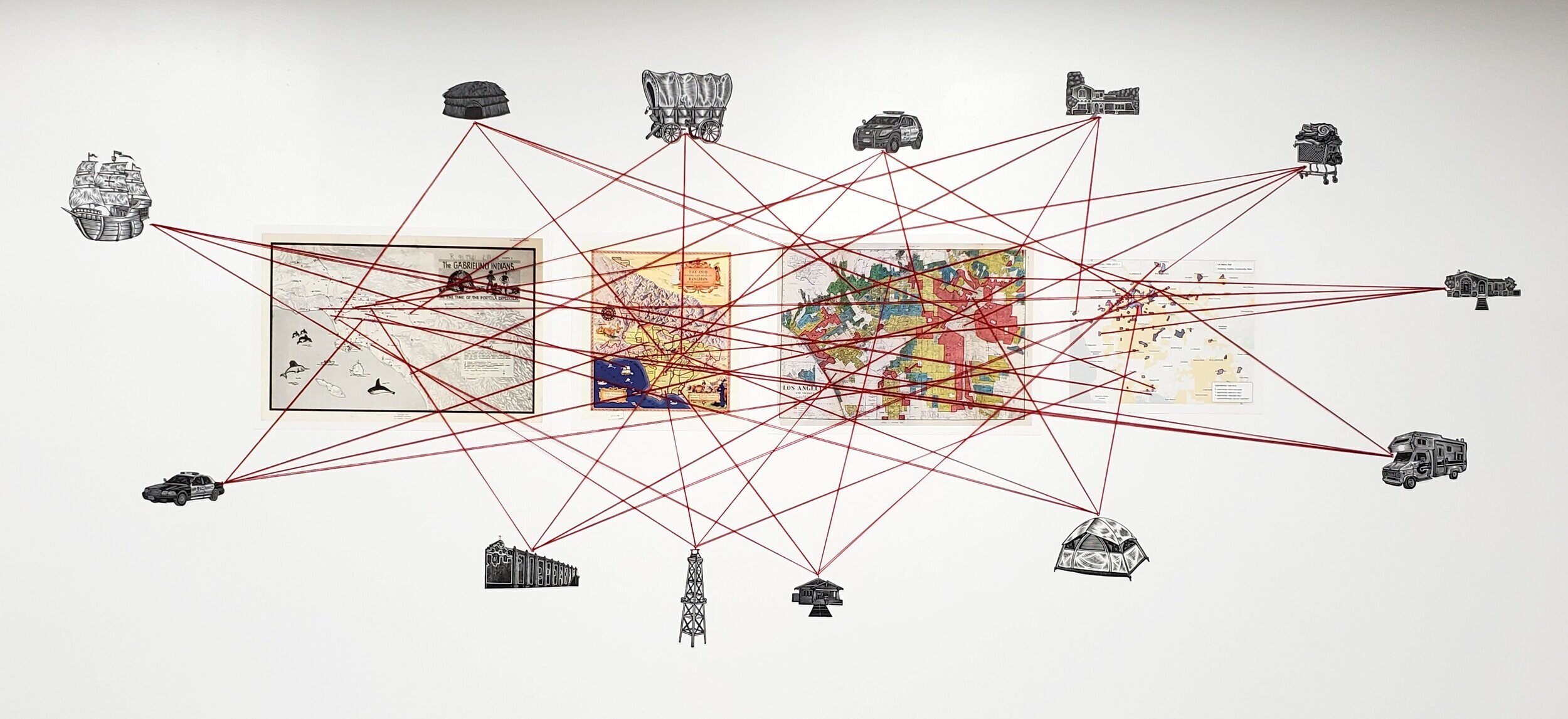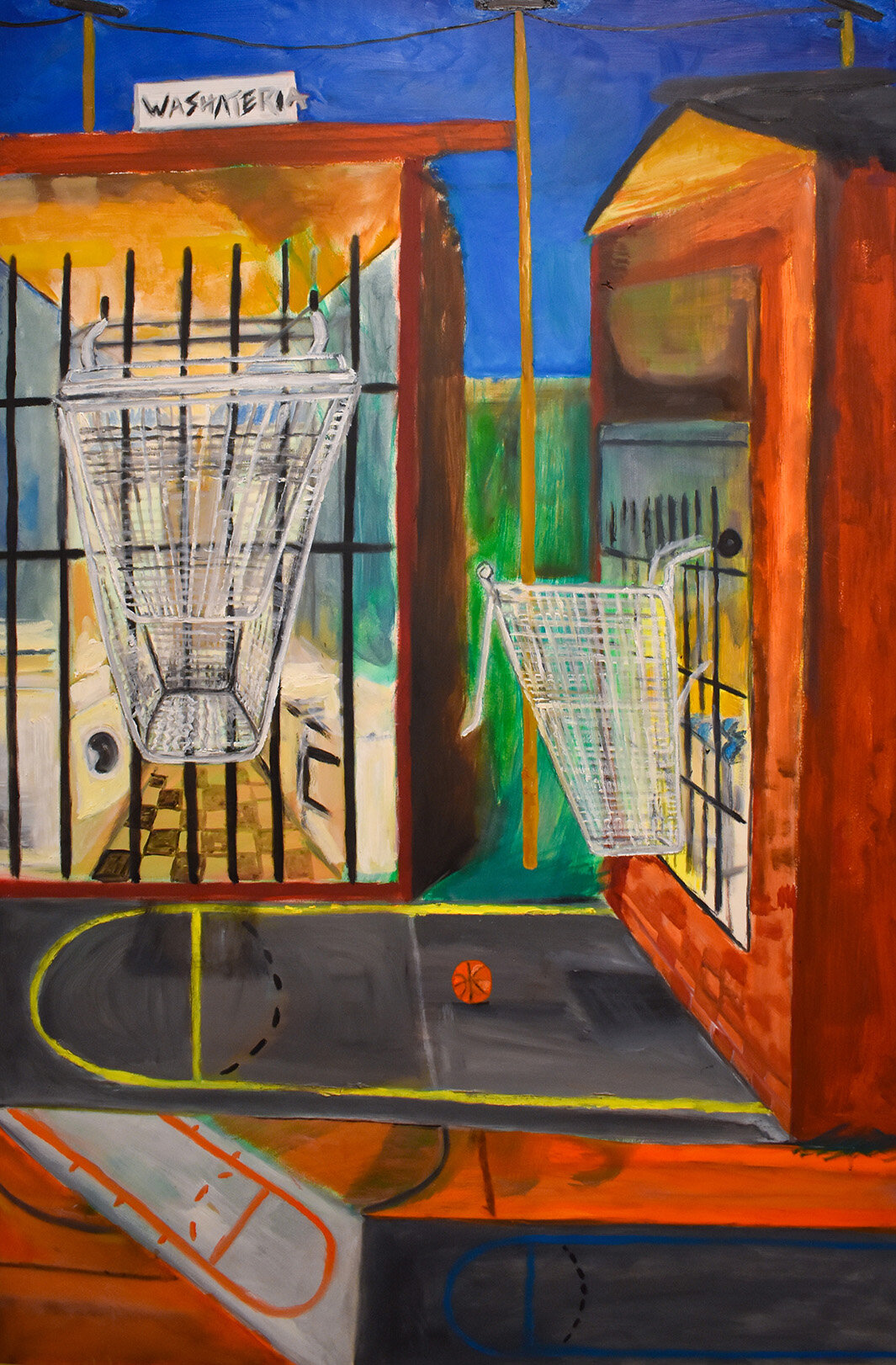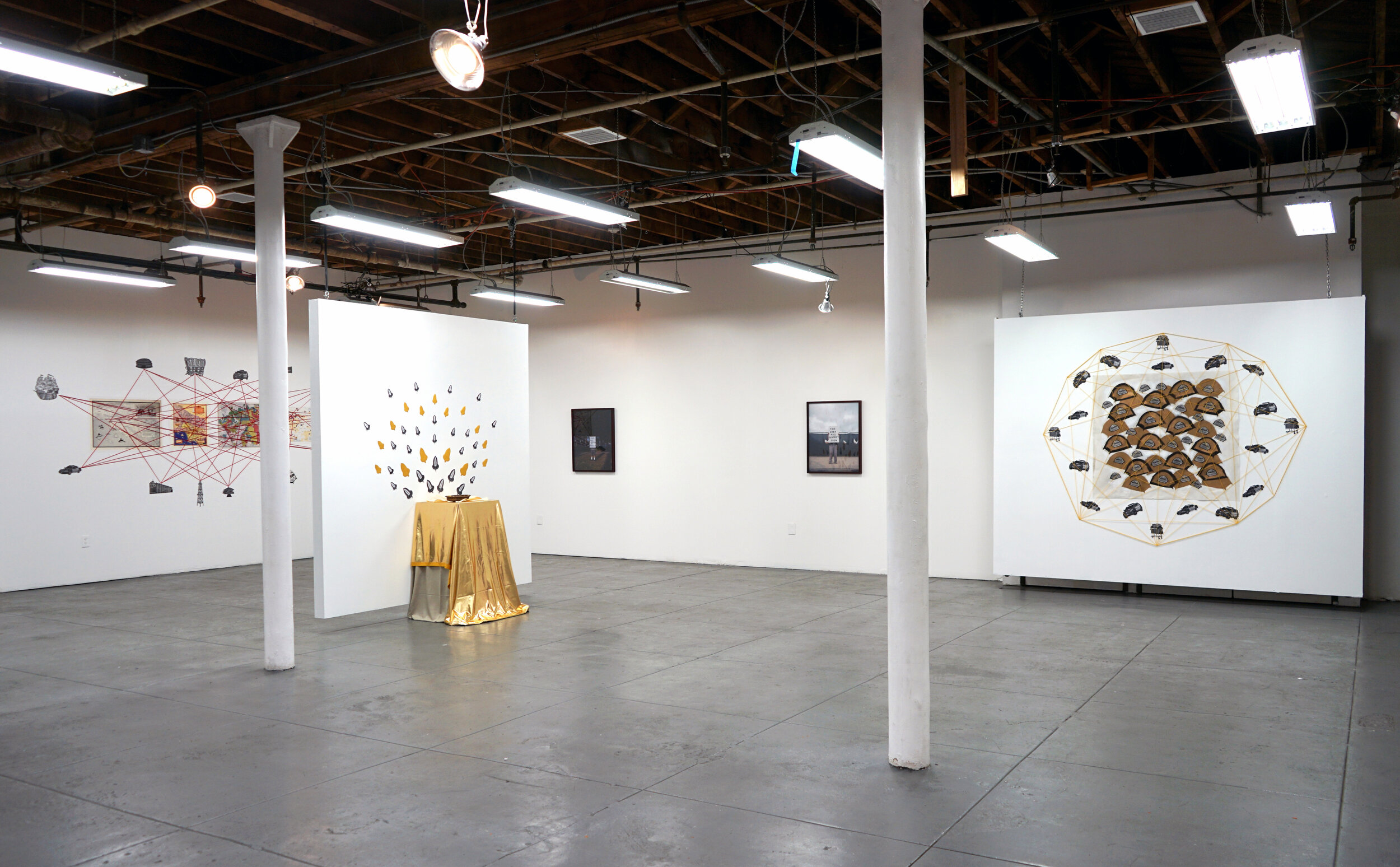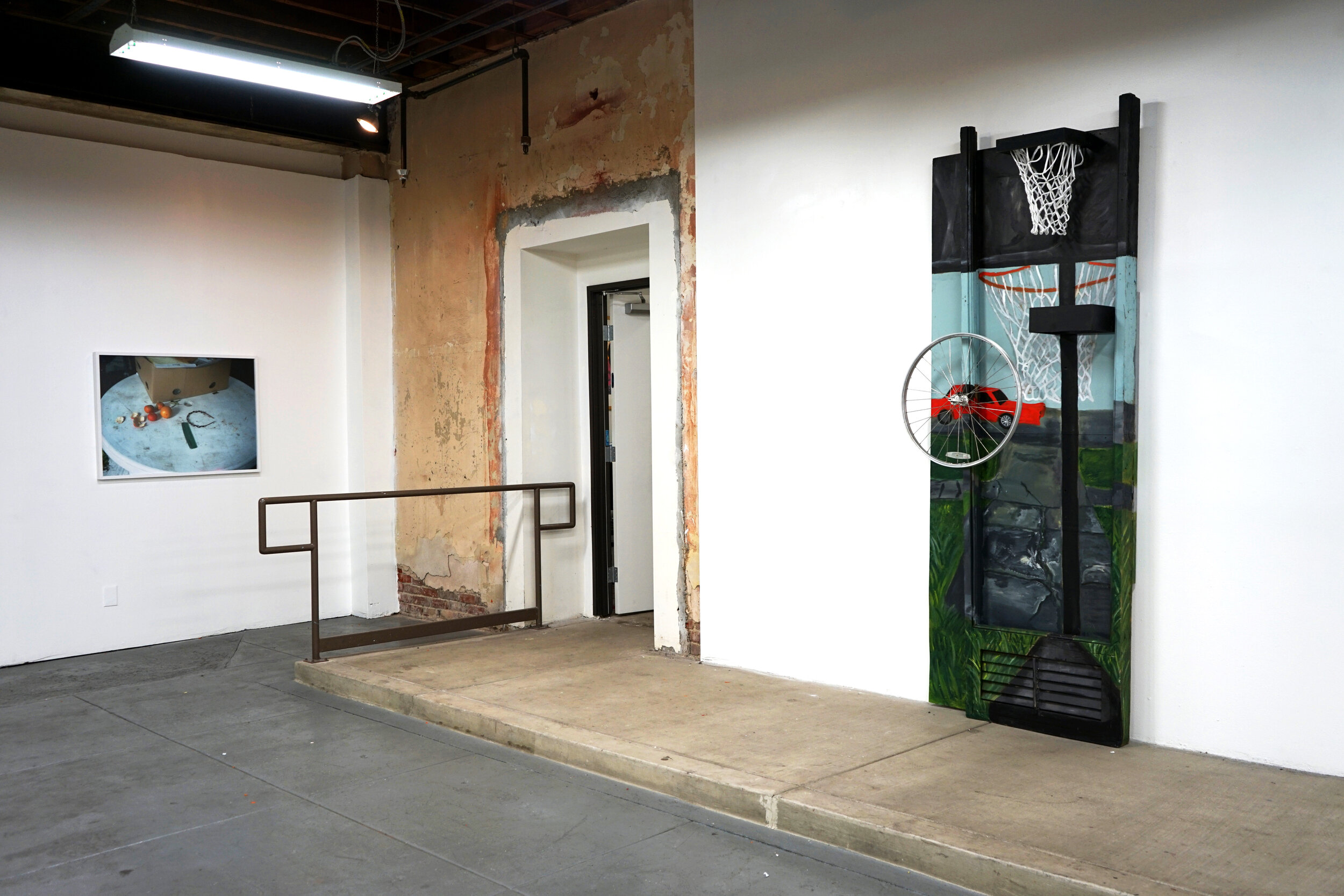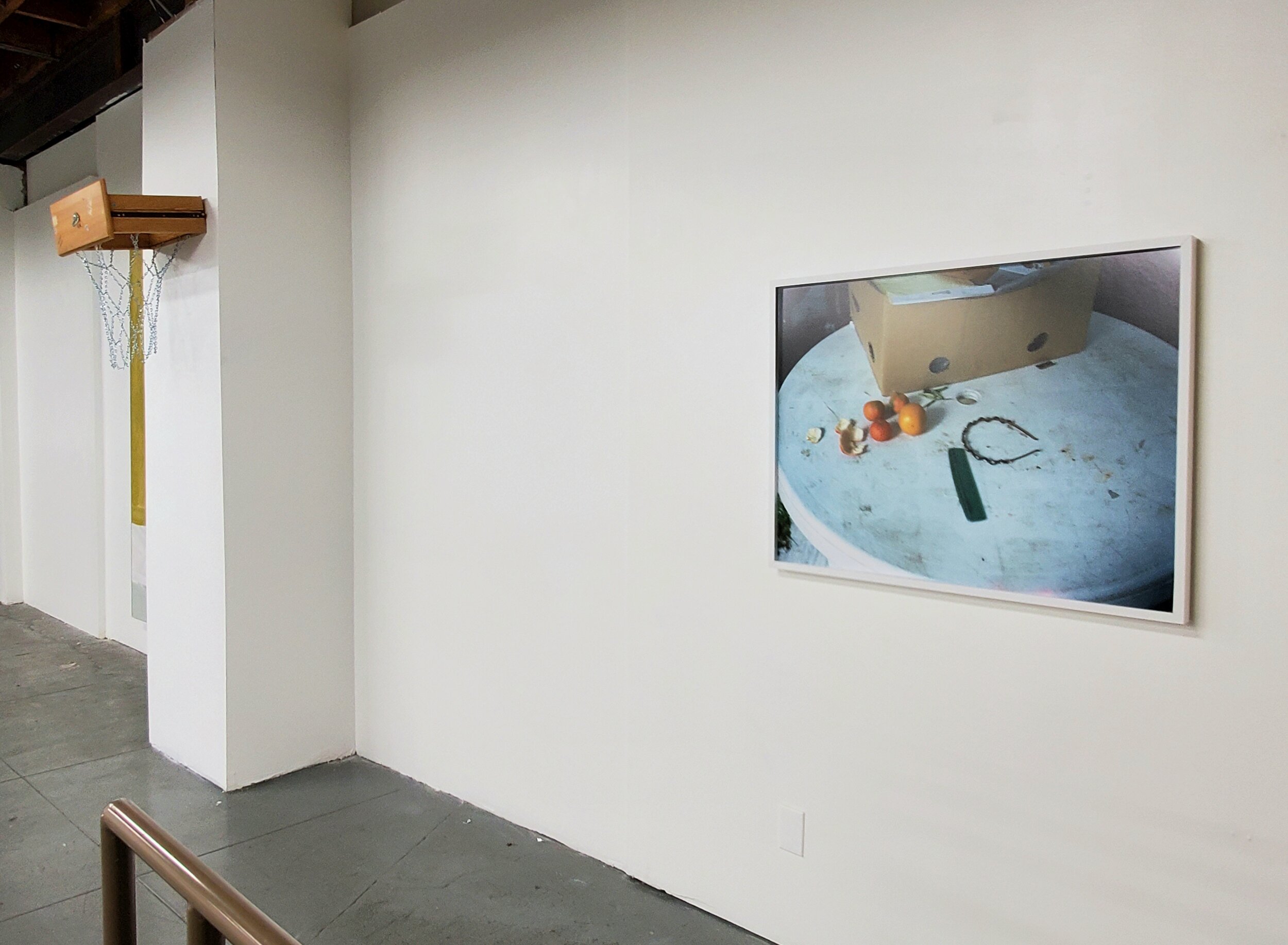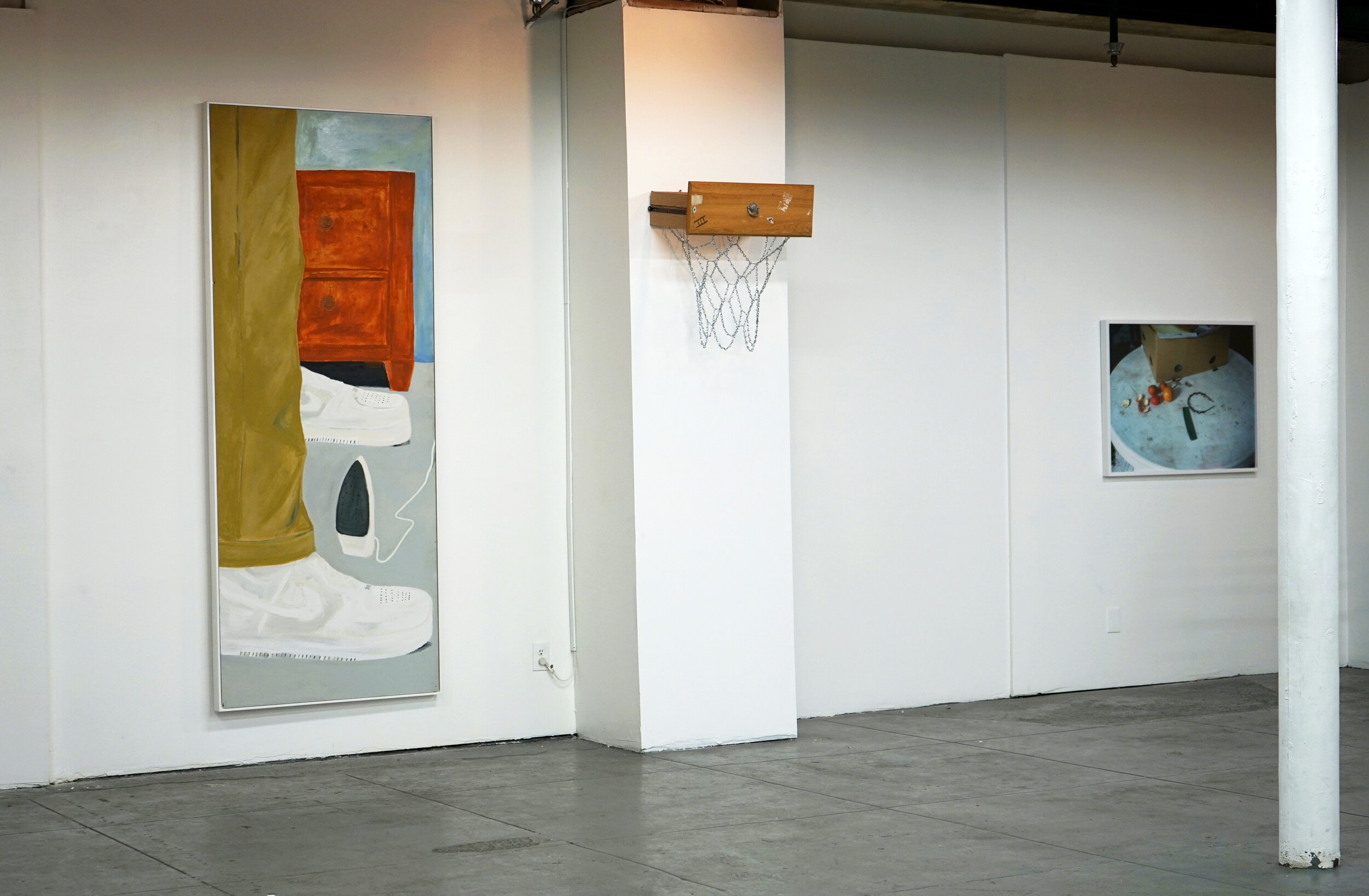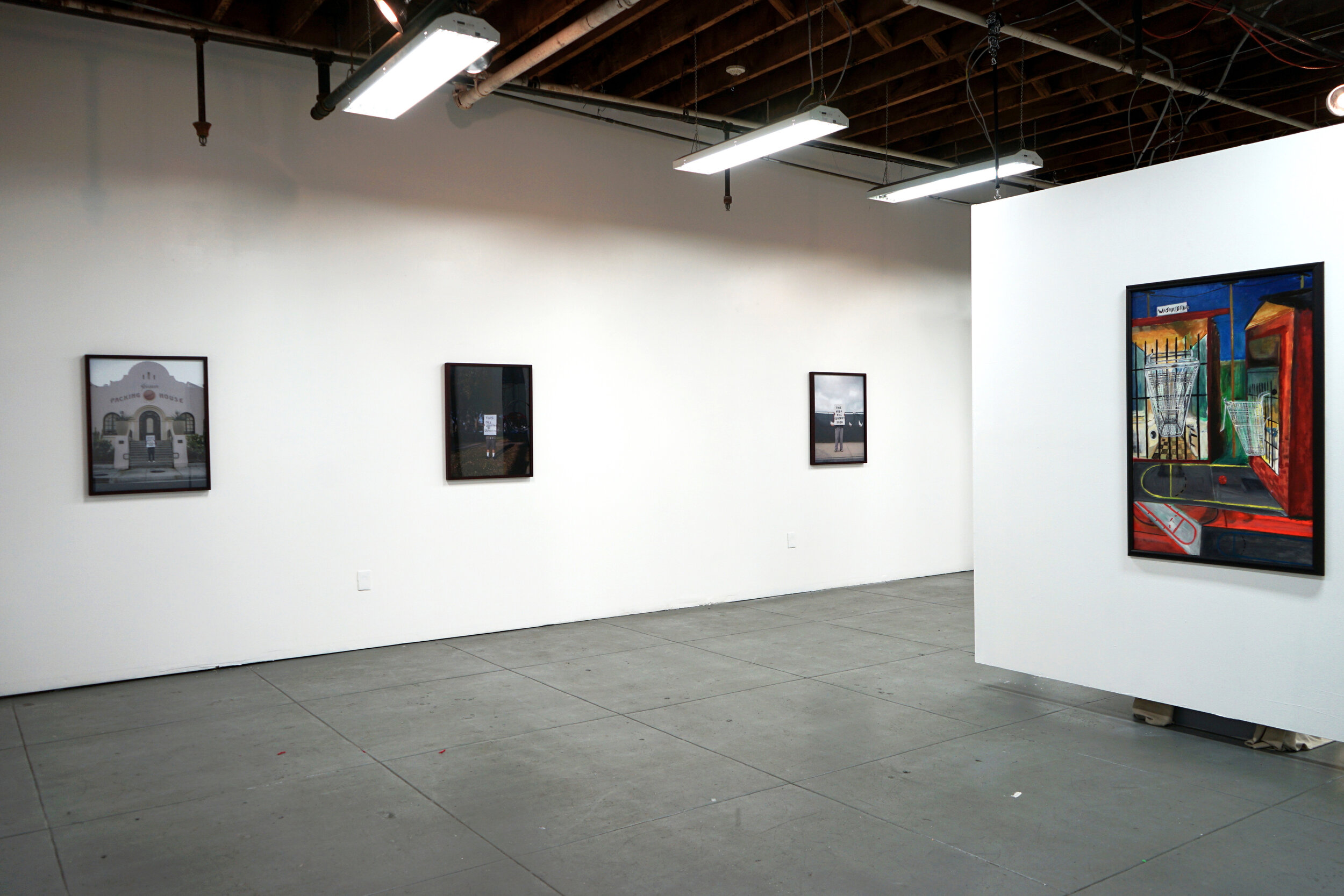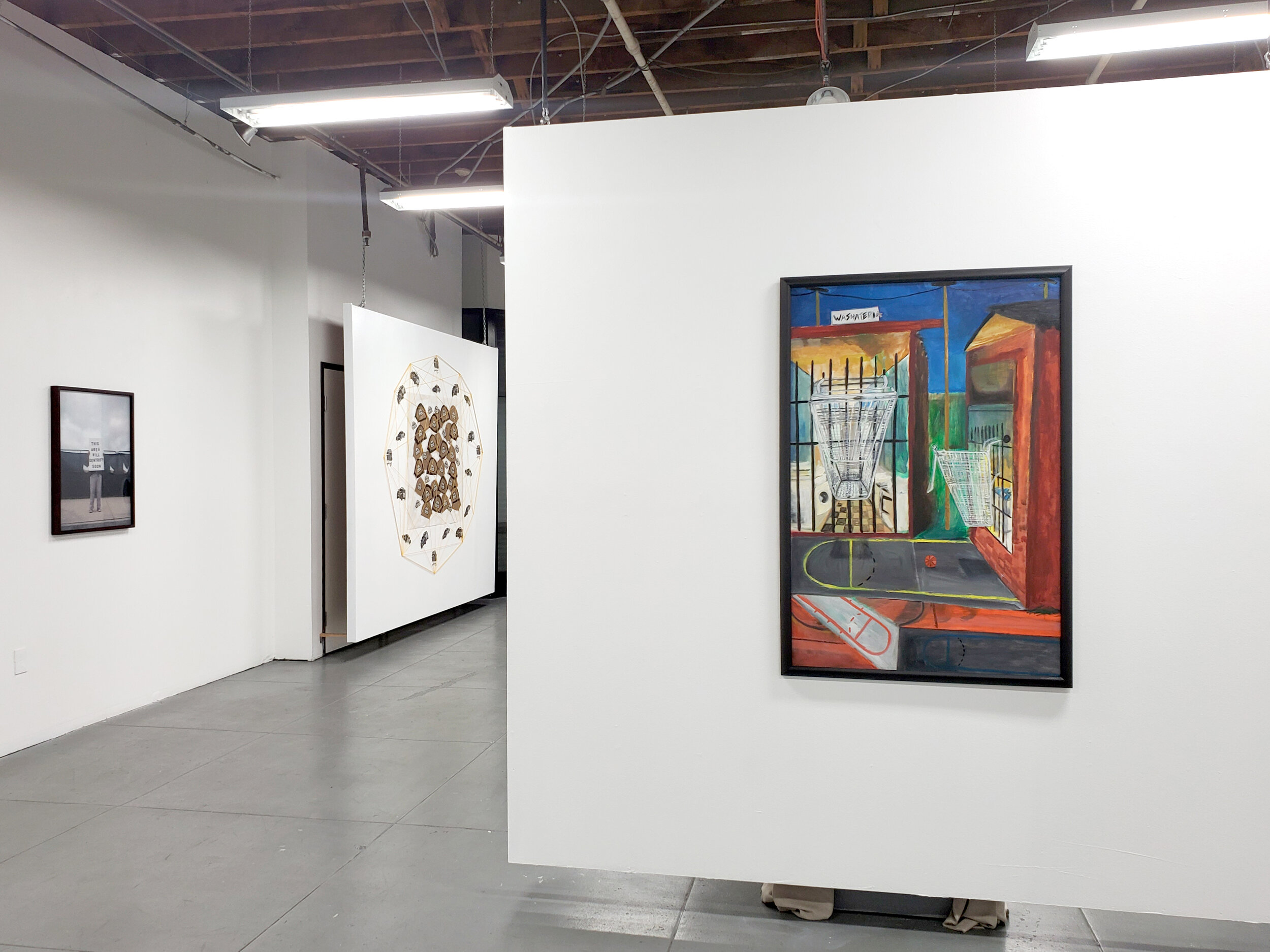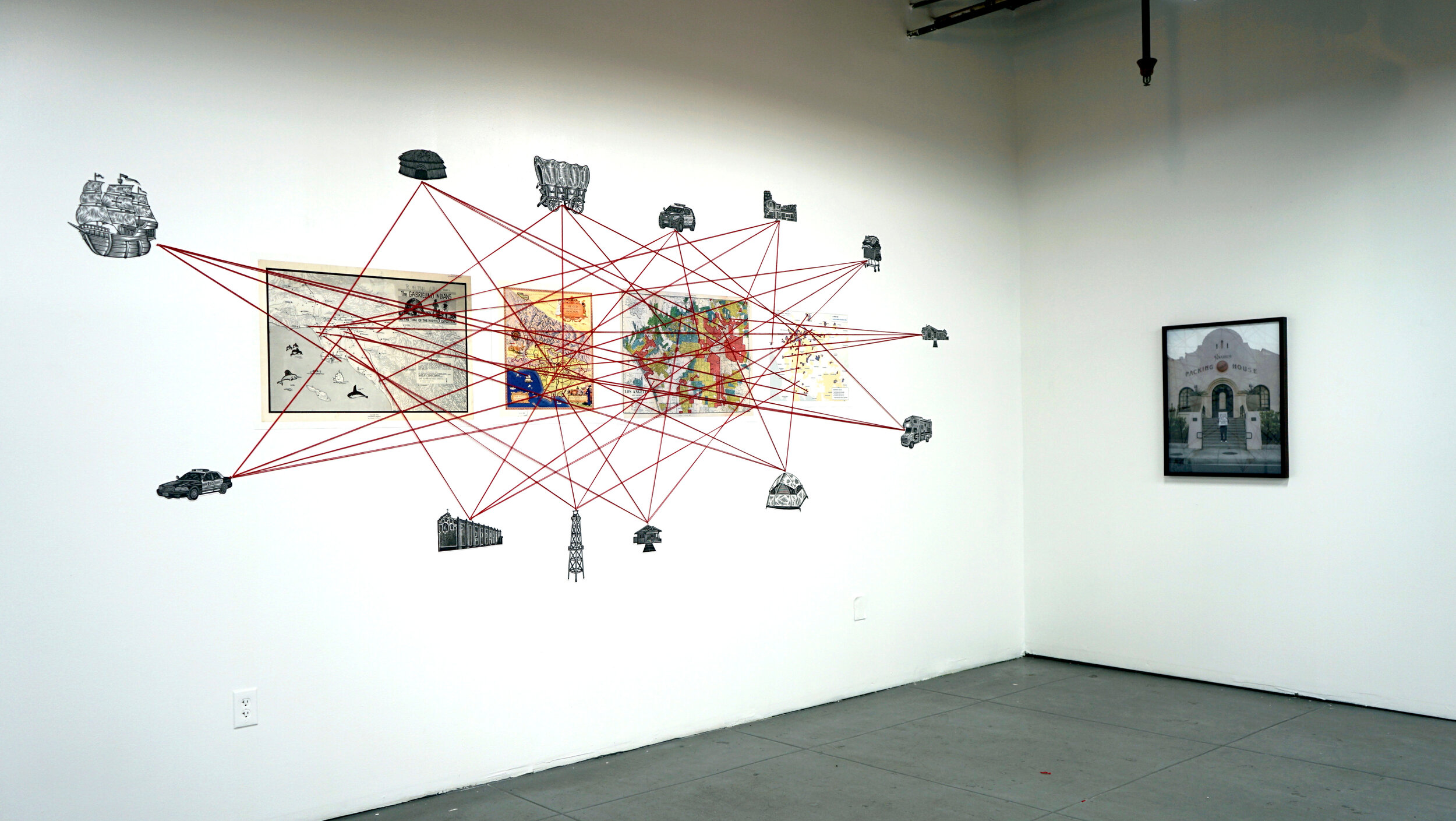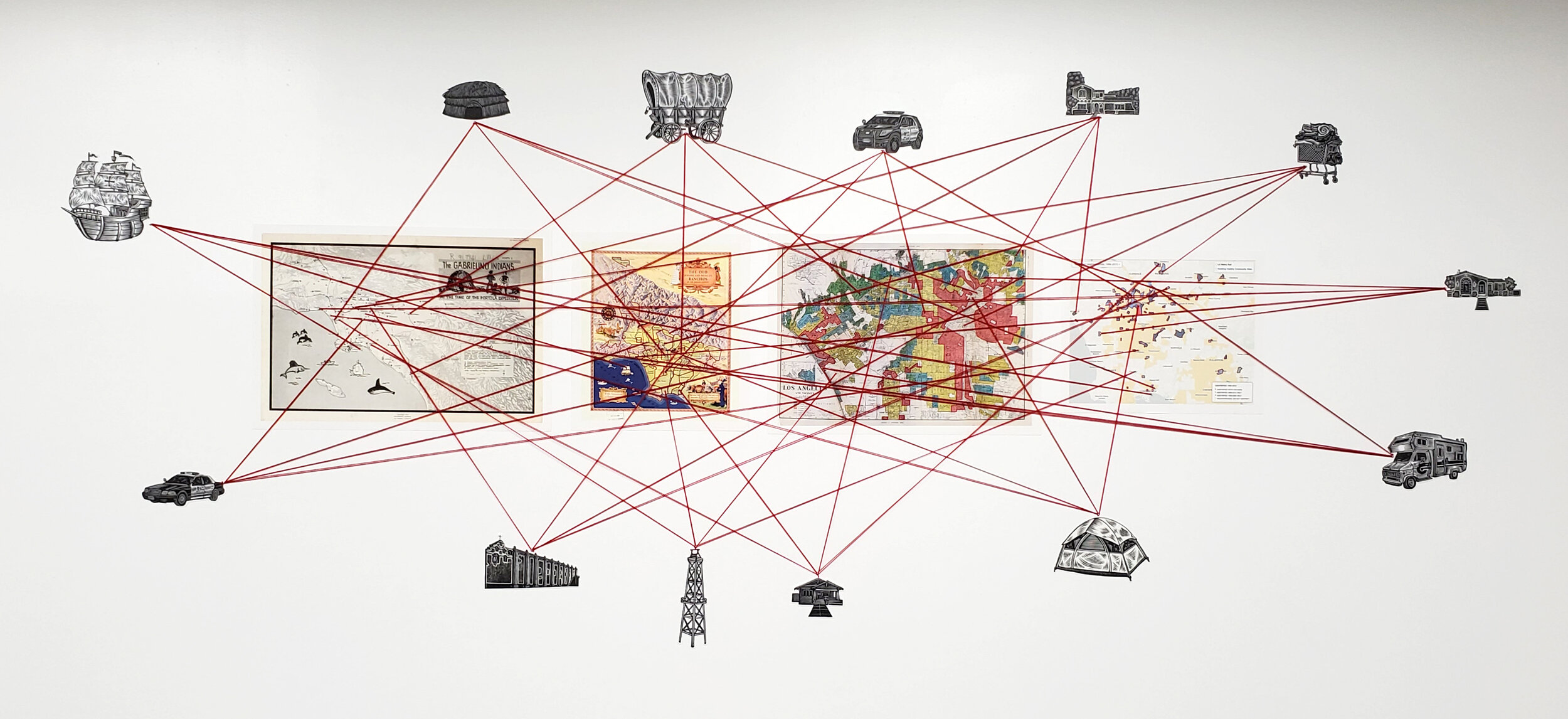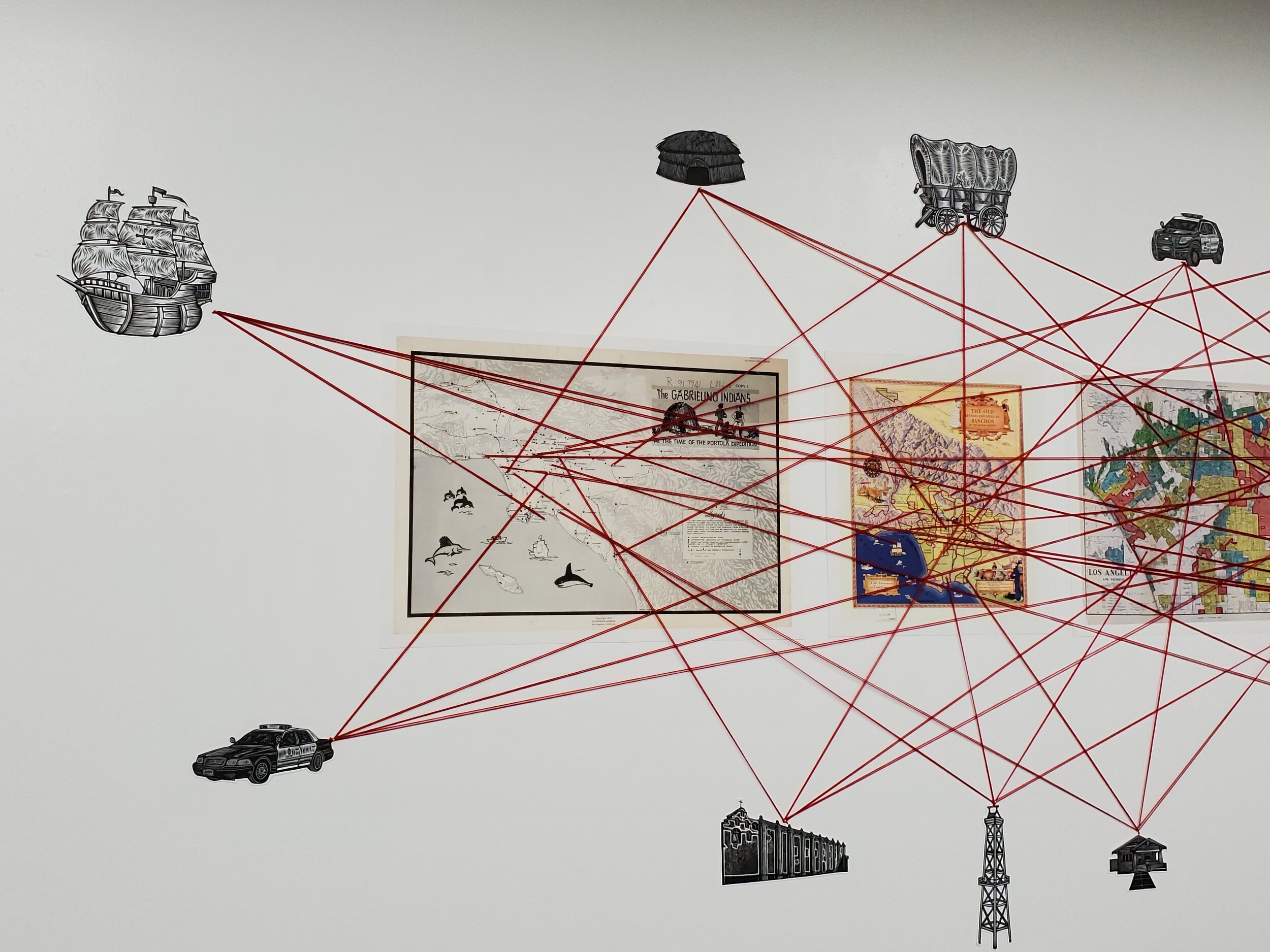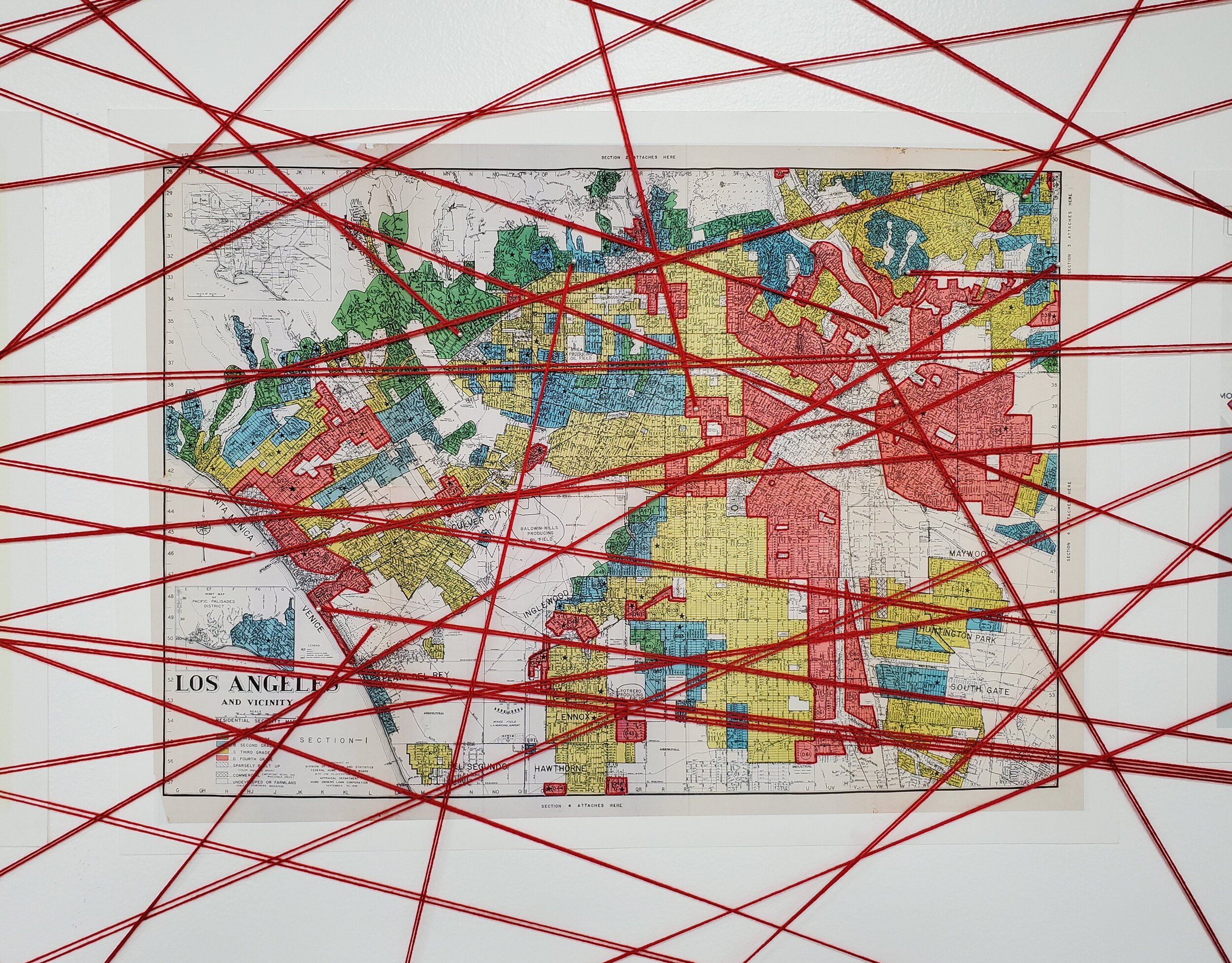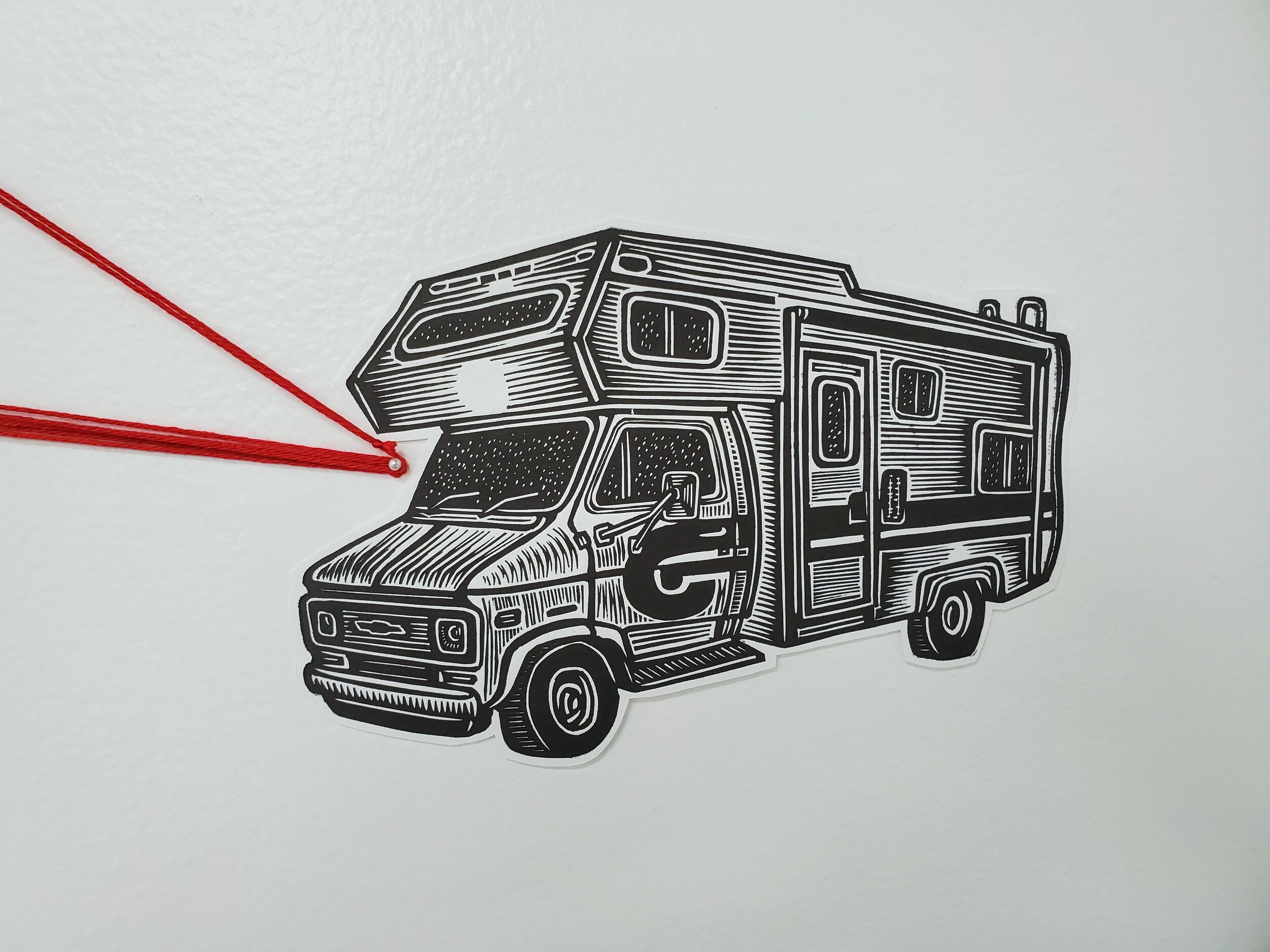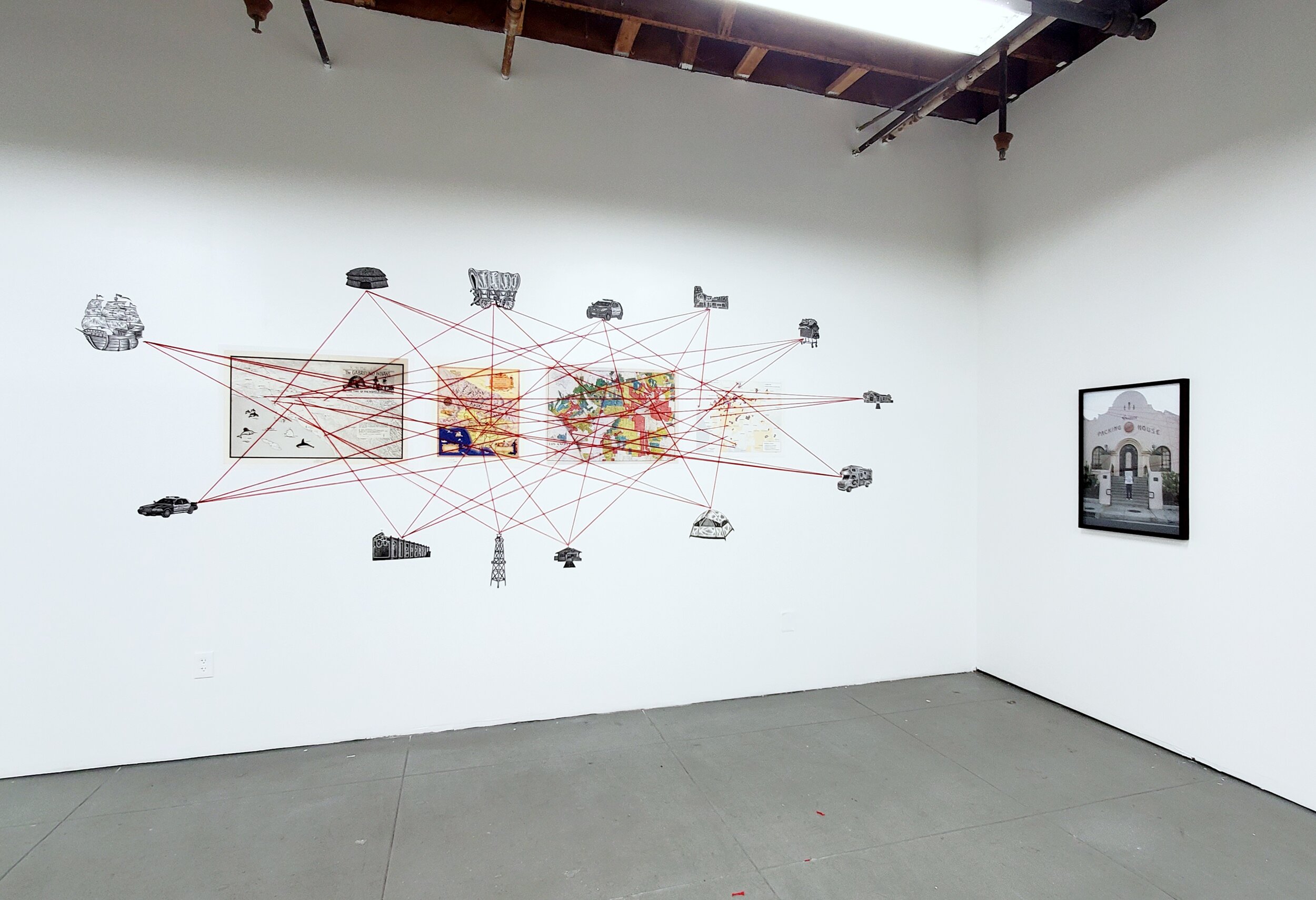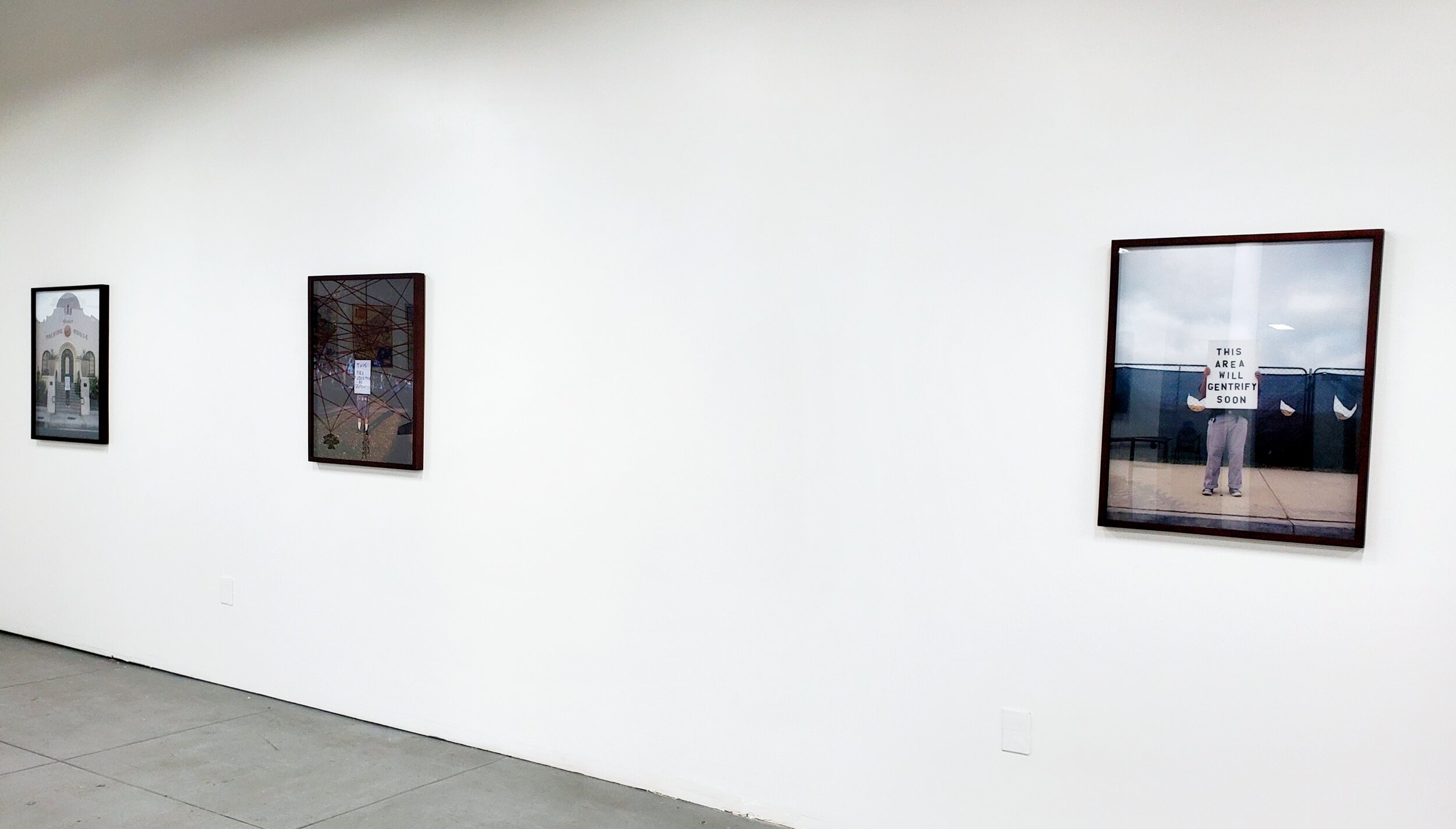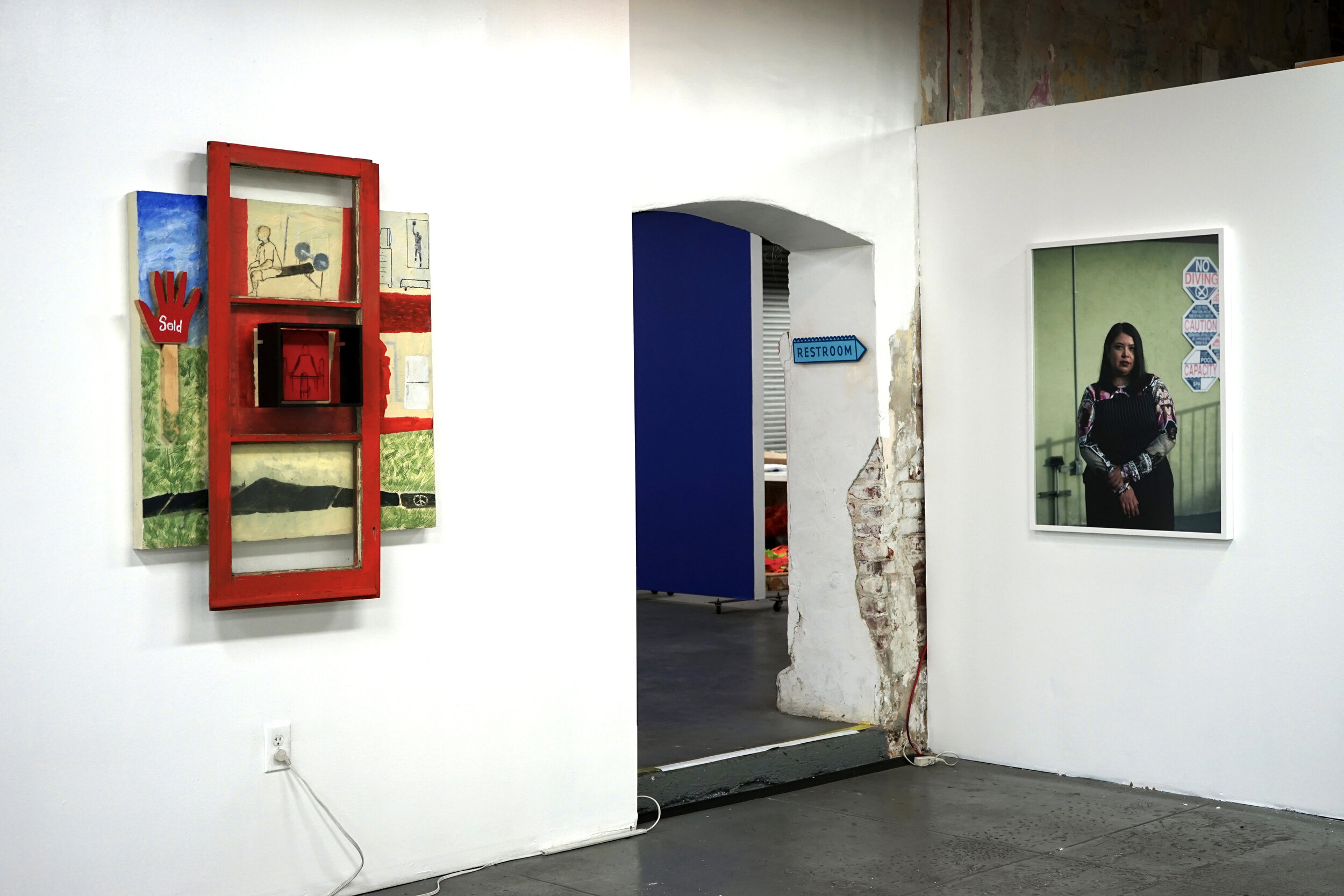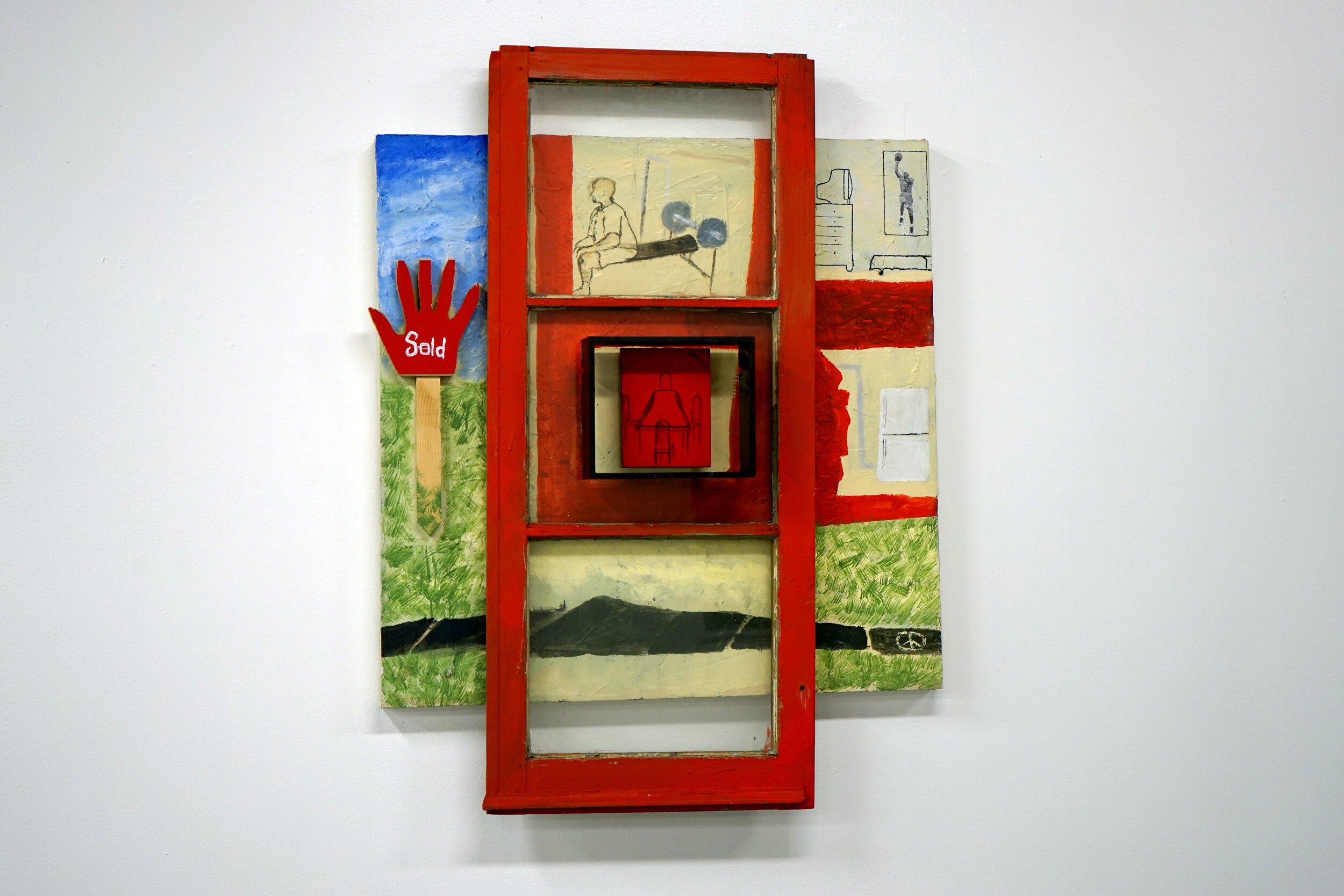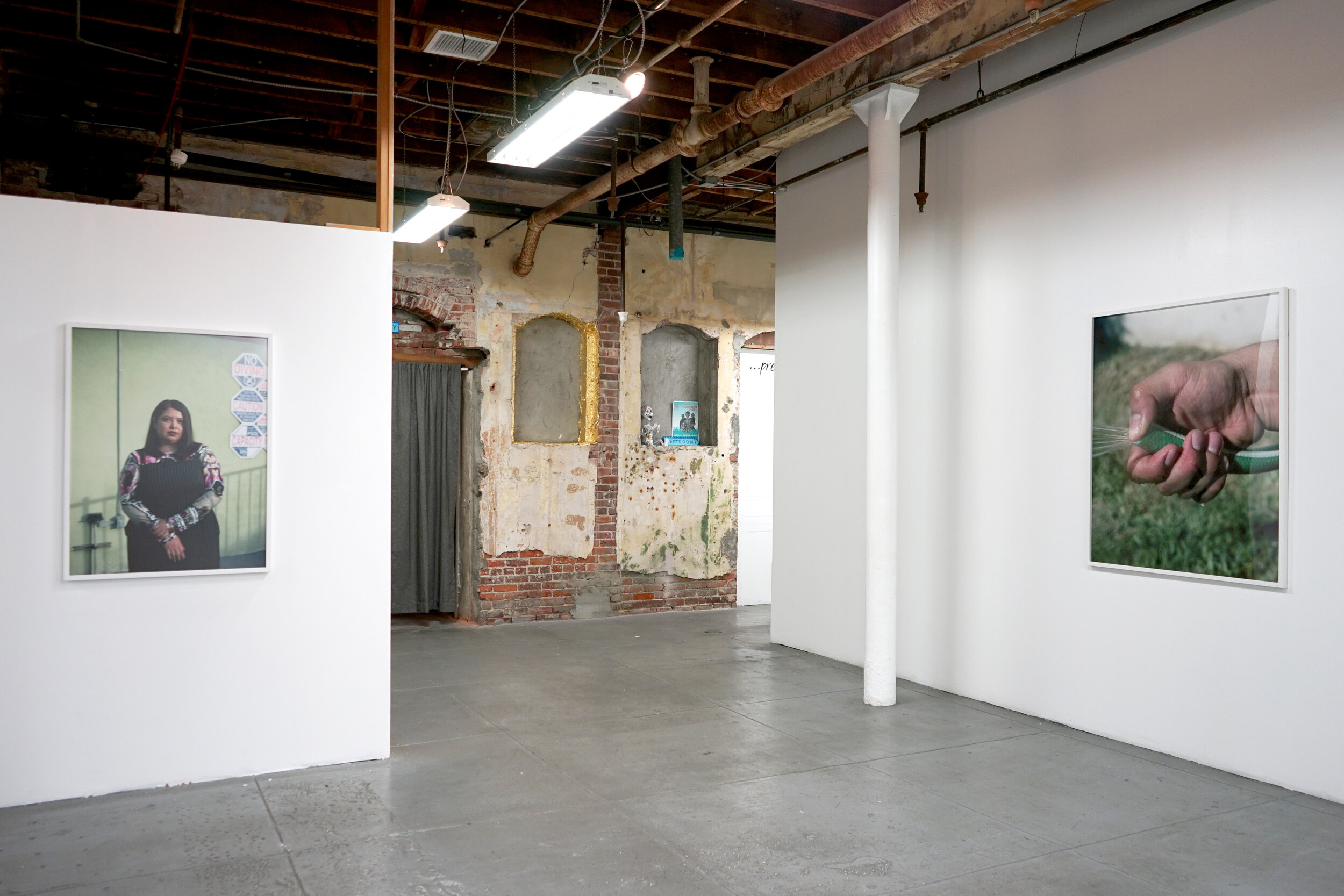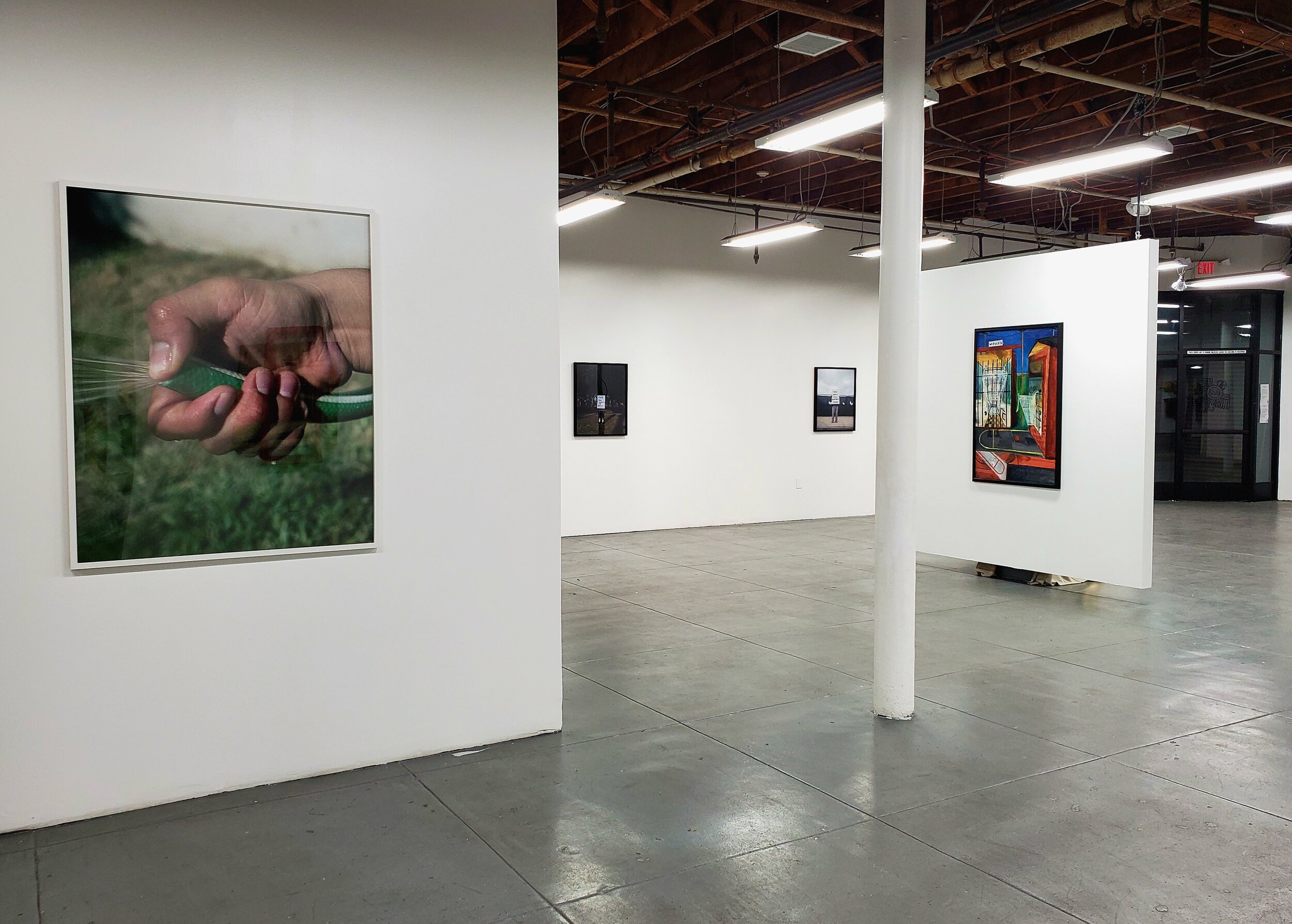Intersections
DECEMBER 12, 2020 - FEBRUARY 6, 2021
Curatorial Statement
Working-class Black and Brown communities most often bear the brunt of the physical, structural, and emotional violence of racial capitalism. This is clearly evidenced through their relationship to police violence, displacement, and histories of social struggle and resistance. The three artists in Intersections utilize seemingly disparate aesthetic strategies (photography, painting, and printmaking), but address overlapping conversations about the development of the urban environment and enforcement of racial hierarchies, be it through social and economic policies or police enforcement of racist and classist legal structures. The term “intersections” is a multivalent concept that speaks to the intersections of race, class, and gender in the construction of socio-political realities, but also alludes to the ways that urban environments have been shaped by processes of development that render vulnerable the most marginalized in society. To intersect, in this context, is also to engage in a sustained conversation about the ways in which Black and Brown communities can foster solidarity in the struggle against the effects of racial capitalism and the ways in which this shapes our daily lives. All three artists in the show are recent MFA graduates whose thesis exhibits were cancelled, altered, or postponed due to the Covid 19 pandemic.




